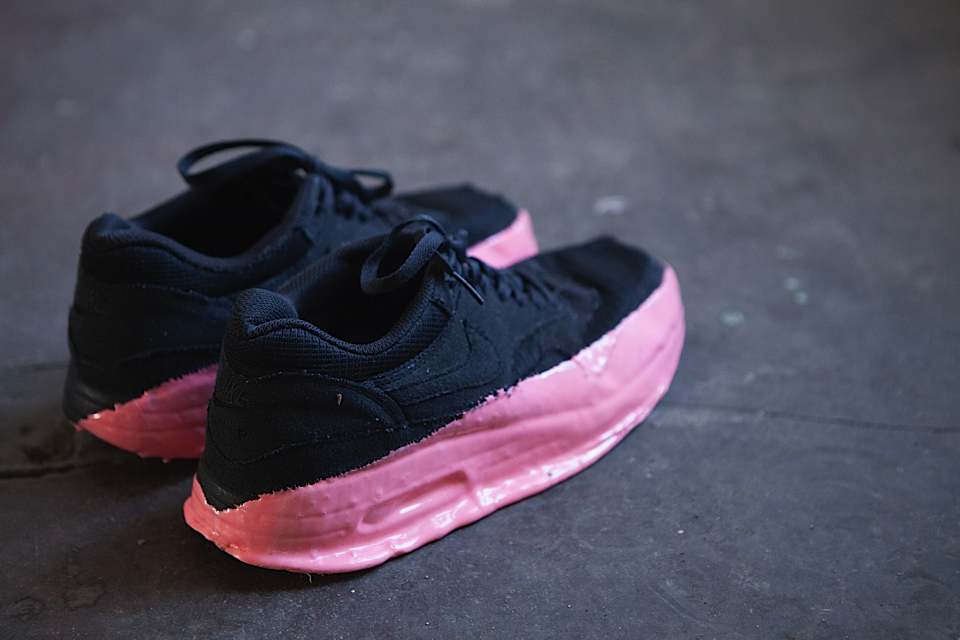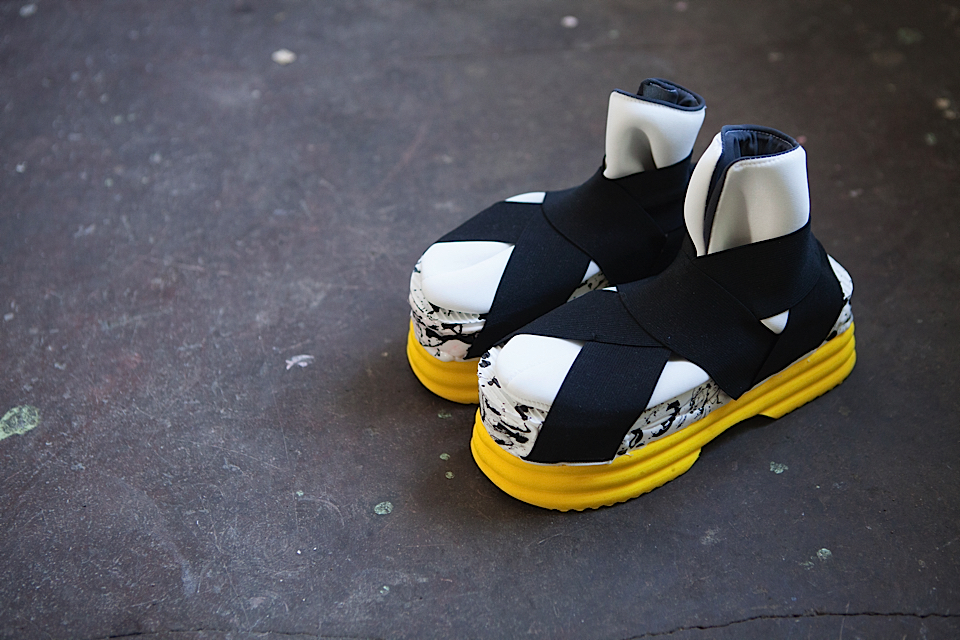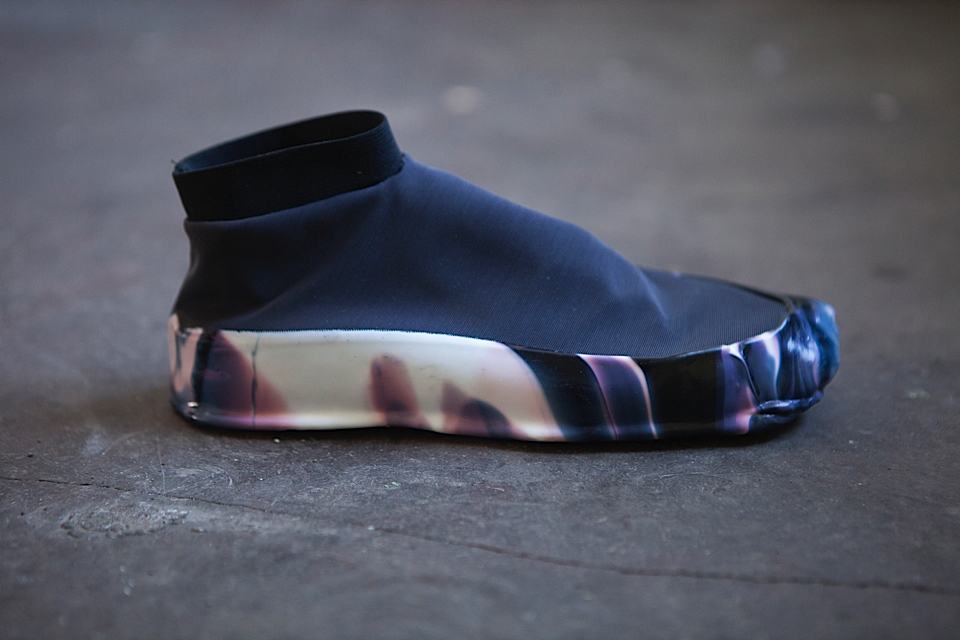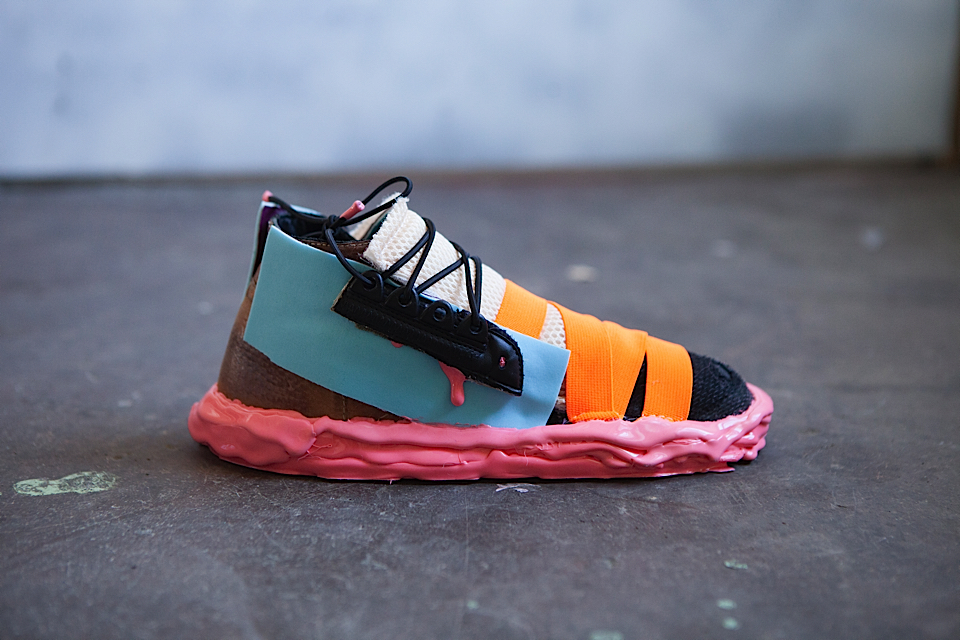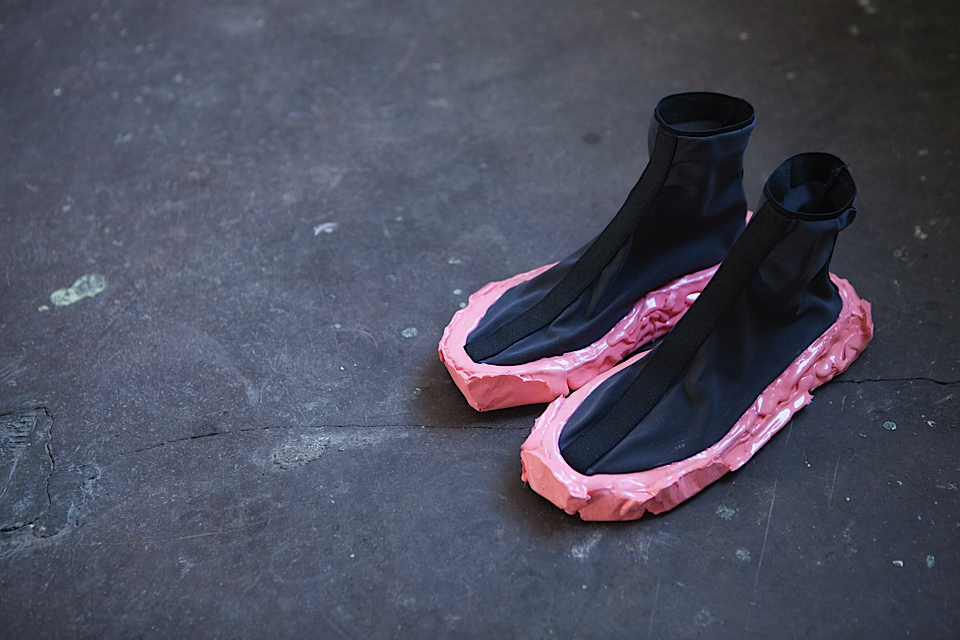TALENTS
contemporary primitives by jagoda fryca
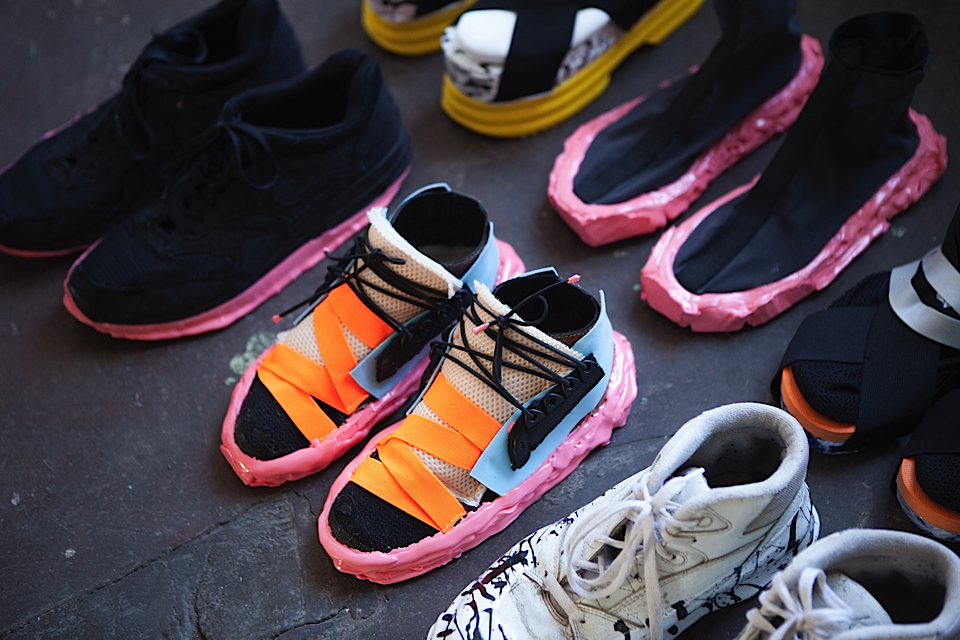
‘Contemporary primitives’ is a graduation project of the alumna of the School of Forum in Poznan, Jagoda Fryca. It is worth mentioning that the mentor of the school and the author of the program is none other than Lidewij Edelkoort.
The footwear collection project is a result of a fascination with amateur handcrafting of everyday objects. It is impossible to avoid comparison with the famous Dashilar Flagship Store project by the Dutch designer Sander Wassink. However, the effect seems to be more commercial. Similarly to the Dutchman, Jagoda Fryca saw the mass product as a resource and resolved to play with ready-made elements, which give infinite possibilities. The designer created an ‘unfinished product economy’ instead of the one in which everything is ‘finished’ and designed to have a predetermined effect, which means that it is bound to become outdated quickly. The collection was made of readily available materials and techniques, and the author herself described the whole creative process as ‘modern primitivism.’ By sharing photos of the products on and a short description of the technique used to craft them on the Internet, the designer, in a way, encourages others to design objects for their own use. Reusing materials and resources is increasingly less innovative and more obvious among the young generation of designers.
What’s the idea behind the ‘Contemporary primitives’ project? What the term of ‘finished product’ means to you?
One moment I noticed that all manifestations of ‘spontaneous creativity’ were less and less visible around us. We are afraid of what could reveal our amateur clumsiness, we feel too incompetent even to decide about our closest surroundings. We prefer having ‘professionals’ manage this area of our life. The same happens with objects. We rarely treat them in an expressive way. The primitives were my personal experiment. I wanted to find out if the existence of something aesthetically far from perfection can still be justified.
And the distinction between finished and unfinished products depends only on our approach to them and on how much potential we are able to see in them.
In your work you give new life to ready-made elements. Do you think that’s a good answer to the modern overproduction of consumer goods problem?
I doubt if we can defeat overproduction in this way. Instead, I suggest that if we look at everything around us in a creative way, an abundance of opportunities will appear before us.
You called the process of creating shoes as a modern primitivism. What is your definition of that term?
When I was creating the collection, I used not only elements of mass products, but also other materials and techniques that are available to the contemporary human, and I called this very technique modern primitivism. I do not mean, however, the literal meaning of primitivism (relating to some techniques or materials taken from primeval cultures), but I understand it as an opportunity to obtain necessary things on your own, an opportunity to handcraft something, in opposition to mass culture. What is primitive today is hand-made, imperfect, and yet immersed in contemporary reality, created using currently available materials.
How did you develop the production technique? Can you briefly describe this process?
I can describe the production technique as spontaneous. Everything depended on the materials that I managed to find or received from my friends. Later, the time came for trials, experiments and extensive testing the product on myself – checking if the shoe holds together, if it is possible to survive a day in it.
You decided to use a very characteristic pop colour range. Why?
The colours I used are a consequence of available materials. For example, I was able to find only pink, black and white warm-setting adhesive. It determined the whole colour range.
You’ve made available online not only photos, but also instructions regarding manufacturing your own shoes. Do you reckon that sharing your know-how is an important element of the economy of exchange?
It was rather a description of materials utilised in a given pair of shoes than a detailed assembly instruction. That this lace was taken from cheap slippers and the other one was moulded from warm-setting adhesive. It gave me occasion to suggest a way of using what we can find around. And because everyone can find something else, detailed instructions would not work here. It is characteristic of scraps that they are often unique.
The ‘Contemporary primitives” project was selected for the finals of the make me! competition organized within the Łódź Design Festiwal 2015.
Agnieszka Polkowska
Contemporary Primitives
make me !
Trend watcher, lecturer, Head of Trends at Pop Up Grupa creative collective agency based in Warsaw. Author of first Polish blog dedicated to emerging trends in fashion and design. Agnieszka Polkowska is also a doctoral student of Academy of Fine Arts in Gdańsk in the domain of experimental design and trends.This is also the field to which she dedicates her scientific work. Since she’s both a recipient and designer, she feels that her experience makes her a right person to share reliable analyses with the world.
trendspot.pl
